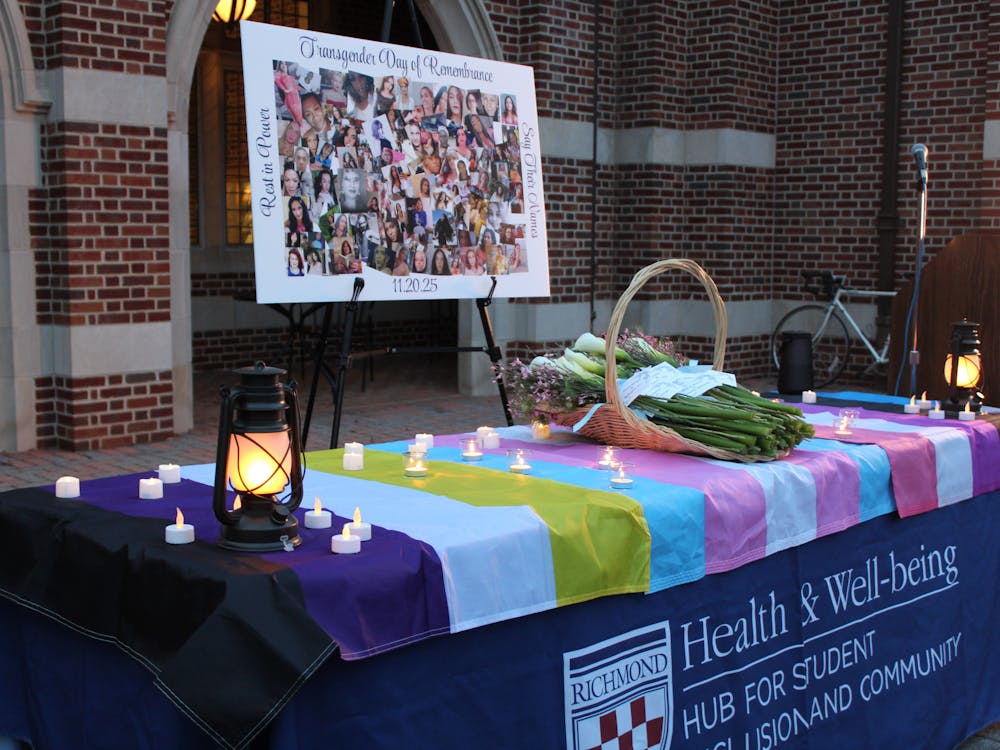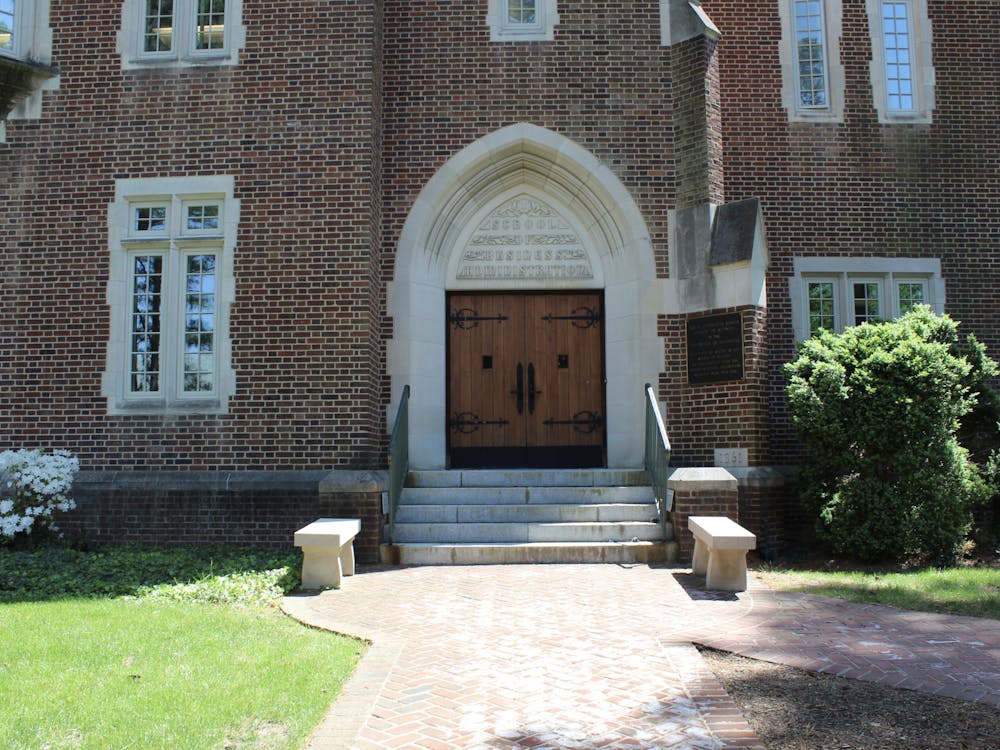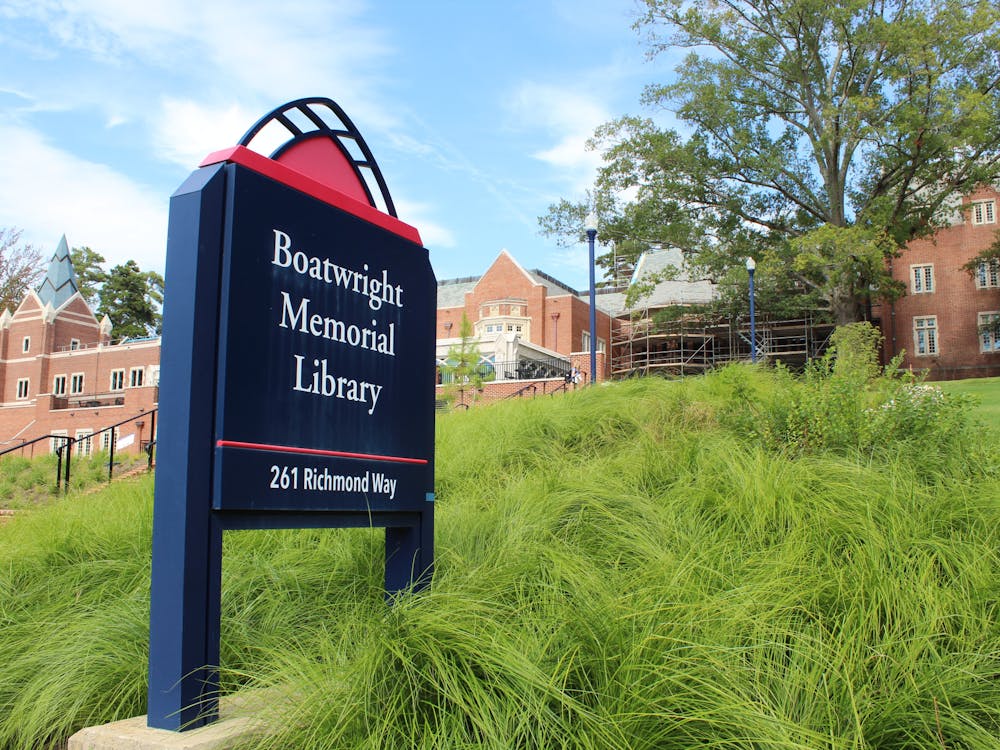President Edward Ayers and his staff have been working with the community to draft a strategic plan that will outline certain goals, values and principles for Richmond's future.
A draft of the plan has been posted on the university's Strategic Plan Web site along with other challenges, opportunities, goals and missions. So far, the plan addresses the university's commitment to academics, both inside and outside the classroom, diversity, affordability and engagement with the greater Richmond community. An official five-year strategic plan won't be finalized until October this year.
Ayers began working on the plan in fall 2007 when he came to campus. He met with various stakeholders -- people with an invested interest in the university to discuss their thoughts about Richmond's future.
Vice President of Student Development Steve Bisese said that Ayers' research into the university's future started when Ayers had first accepted the position. He met with various faculty, staff, alumni and student groups in the spring of 2007 to discuss what they wanted to see happen to their school during the next five years.
In the fall, Ayers asked the Richmond community via e-mail, speeches, the Web site and letters, "What does the University of Richmond want to be known for as we move forward?"
Lori Schuyler, chief of staff for the president, said the question actually encompassed two questions: What do we want to do, and what do we want to be known for?
While the exact numbers could not be accounted for according to Schuyler, a couple of hundred responses to the question were sent to Ayers through e-mail and the Web site.
"As new president, Dr. Ayers recognized that one of the things he needed to do was work with [everyone] to develop a plan for moving forward," Schuyler said.
Ayers then met with faculty and staff on a weekly basis and would ask open-ended questions to see what others felt were the university's strengths and challenges.
Bisese said he had first heard about the plan at a Board of Trustees retreat in January. He said Ayers had used that time to carve out a shell for the strategic plan and to brainstorm. Bisese said he was very happy with the strategic plan because "it is very holistic."
The plan focuses on engagement outside of the classroom as well as allowing students from different backgrounds more access to the Richmond experience.
The plan asks questions about how to create an affordable education. It discusses the possibility of extending the current guaranteed full aid packages that allow students from Virginia families with incomes less than $40,000 per year to attend this university to students from all states. The plan also questions whether to raise the $40,000 threshold. There is also a question about implicating a "sliding scale" tuition, which would decrease payment of tuitions by a percentage based on a family's yearly earnings. This plan would help middle-class families with affordability.
Enjoy what you're reading?
Signup for our newsletter
"How much more can you build?" Bisese asked. "The plan focuses on more access and scholarship."
The questions raised about affordability also offer potential answers to the questions about diversity and an increase in scholarship on campus. Dean of Arts and Sciences Andy Newcomb, who also attended the meeting, said he hoped that the strategic plan would help create interconnectedness among the five schools. One of Newcomb's ideas for the strategic plan is to eliminate barriers and allow students to coordinate their studies among the five schools if they decide to do so.
After the Board of Trustees retreat, Ayers continued to meet with alumni and students through meet-and-greets and open forums. "In all of these conversations, he could see a pattern of what the university wanted to focus on," Schuyler said.
A "strawman" draft of this plan was released in February and was the first one that university members could read.
The principles were left as questions in anticipation that university community members would engage with the Web site or through other means to respond about what they thought about the strategic plan.
Junior Chris Florio is a student representative for the Board of Trustees who has played a critical role providing student opinions about the draft. Eight more students met with Schuyler to discuss points of clarification after the draft was released.
"As it stands now, it's deliberate, it's pretty vague and open for revision over time," Florio said.
While Florio said he believed it was difficult for him to criticize the draft, there was one aspect that he said he hoped to see improvement in. "In light [of recent events], a commitment to diversity needs to be hammered out," Florio said.
He said he believed there should have been an implicit definition as to what diversity should be on this campus. There are many different aspects to diversity that he said should have been stated very carefully within the strategic plan. Newcomb agreed that the university needed to address diversity issues.
"We want our students to experience in college what they'll see outside of college," Newcomb said. "Students, faculty and staff should be representative of the outside world."
Ayers is also addressing the idea of engagement of students with the Richmond community. The plan poses questions that discuss the possibility of students learning outside the classroom in the city or regions around the city to experience "the real world" and learn through service.
As the drafts move through more focus groups, and Ayers continues to engage with stakeholders, the "clock" for the five-year plan will not really start until the 2009-2010 school year, Schuyler said.
A revised draft will be released in April and work will continue during the summer to draft the finalized plan, which will tentatively be released in October. Input will continue to be taken and considered. Schuyler said Ayers would continue to provide opportunities for students to meet with him face to face to discuss the plan and any ideas they might have.
"The Q and A's with Dr. Ayers didn't solicit a lot of attendance," Florio said.
An important step that students need to take between now and whenever the draft is completed is to be cognizant of how important their roles are in drafting the five-year plan, Florio said.
Learn more about the strawman draft.
Contact reporter Phuong Tran-Le at phoung.tranle@richmond.edu
Support independent student media
You can make a tax-deductible donation by clicking the button below, which takes you to our secure PayPal account. The page is set up to receive contributions in whatever amount you designate. We look forward to using the money we raise to further our mission of providing honest and accurate information to students, faculty, staff, alumni and others in the general public.
Donate Now


